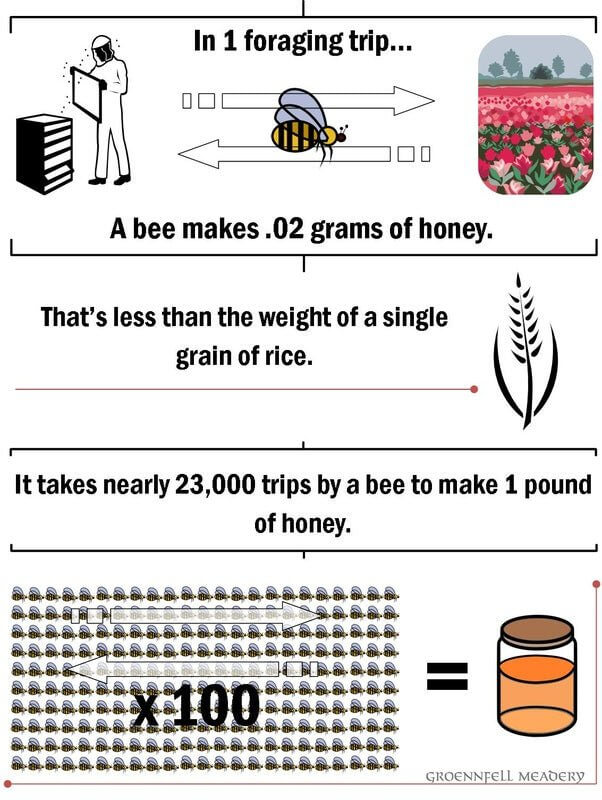
Note: All Data is 100% Imaginary and Guaranteed Inaccurate
1) The amount of literature, web content, and other buzz about the subject has been growing geometrically in recent years. (We would say exponentially, but the owner is actually a mathematician by training and she told us that it hasn’t been technically exponential.)
2) Williams-Sonoma is selling a Home Mead Making Kit. If the hoity-toity Williams-Sonoma is in on the action, there must be some real money to be made.
3) Just look at that graph! We made up every single number this very morning before the coffee was even brewed, so it must be true!
We rest our case.
There is, nevertheless, a serious problem with that graph (other than the fact that it is entirely founded on fiction). As you can see, home mead making is on the rise, but nowhere near historic levels. We need more meadmakers!
In last week’s blog post we gave our best advice for not screwing up your first batch of mead. We’ve also discussed some of the nuances of mead making like selecting a yeast strain, the process of aging, and many other topics. But we’ve never really answered the most basic home mead making question: What do you need to get started?
1) Not the Williams-Sonoma kit. Because A) It’s overpriced, B) It uses the nonsense phrase, “contains no chemicals,” C) It only makes a gallon, and D) It does not contain a sanitizing solution
2) A fermentation vessel. Personal preference of our staff is a 7.8 gallon Brew Bucket for primary, and a 5 gallon Better Bottle for secondary. Some people prefer all glass. That’s cool too. Either way, why make 1 gallon when you can make 5 with the same amount of effort?
3) An airlock to keep bugs and wild yeast out as well as the appropriate bung for your fermentation vessel.
4) A sanitizing solution. There are a slew to choose from, but you seriously need to sanitize everything your mead is going to touch.
5) A siphon (known in brewing lingo as a racking cane) to get your mead from primary to secondary and from secondary to whatever you’re going to drink out of.
6) The ingredients: Honey, Water, Yeast, and Yeast Nutrient.
7) Or, ignore this list and go to your Local Homebrew Shop and tell them you want to make mead.
There are 1,286,953 contraptions for homebrewing and every home meadmaker will tell you that such-and-such 5 are absolutely essential. But, since we can’t all agree on which five things they happen to be, we’ll leave the list there. We may not be good graph makers, but at least we’re not contentious.





